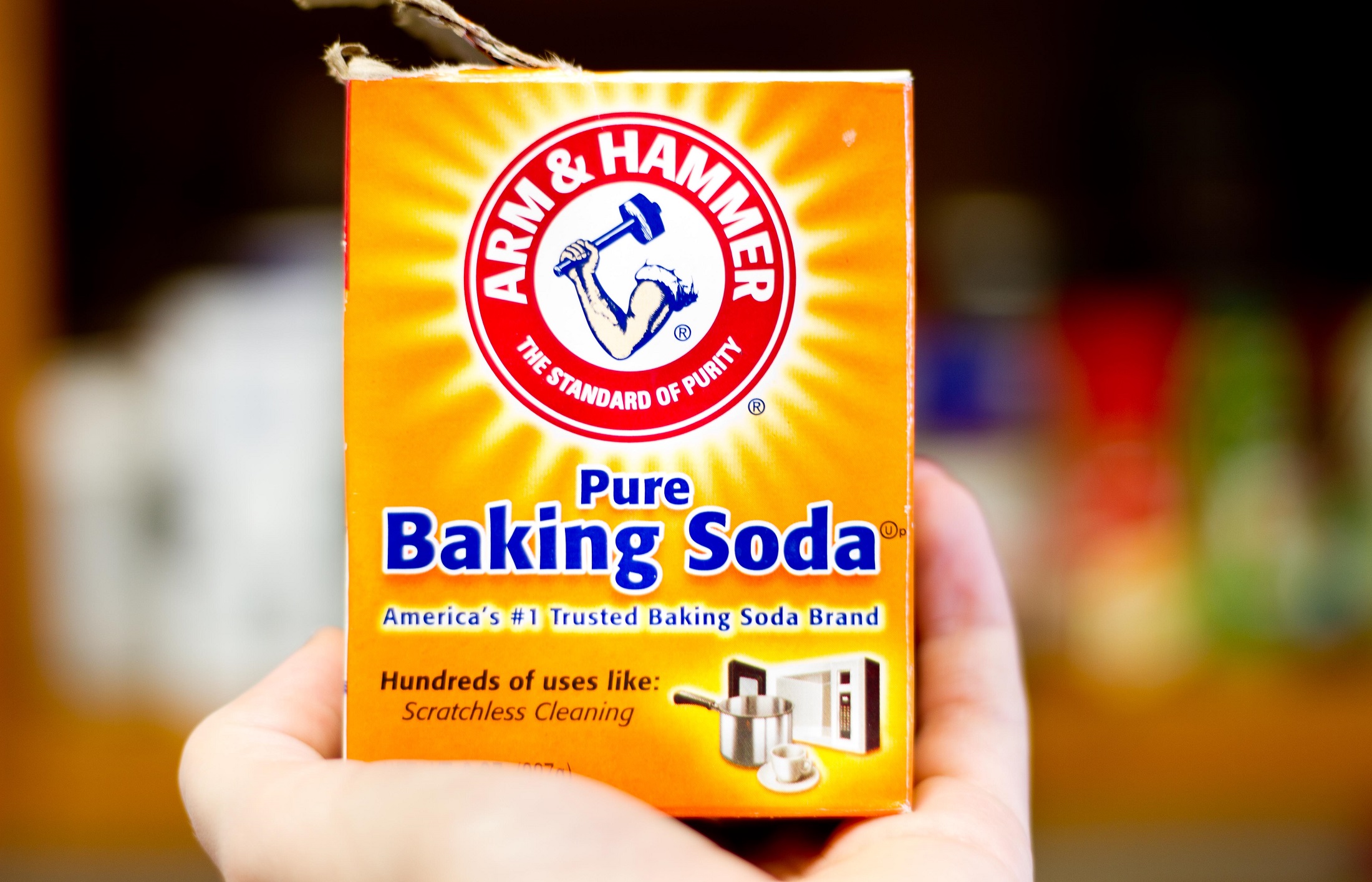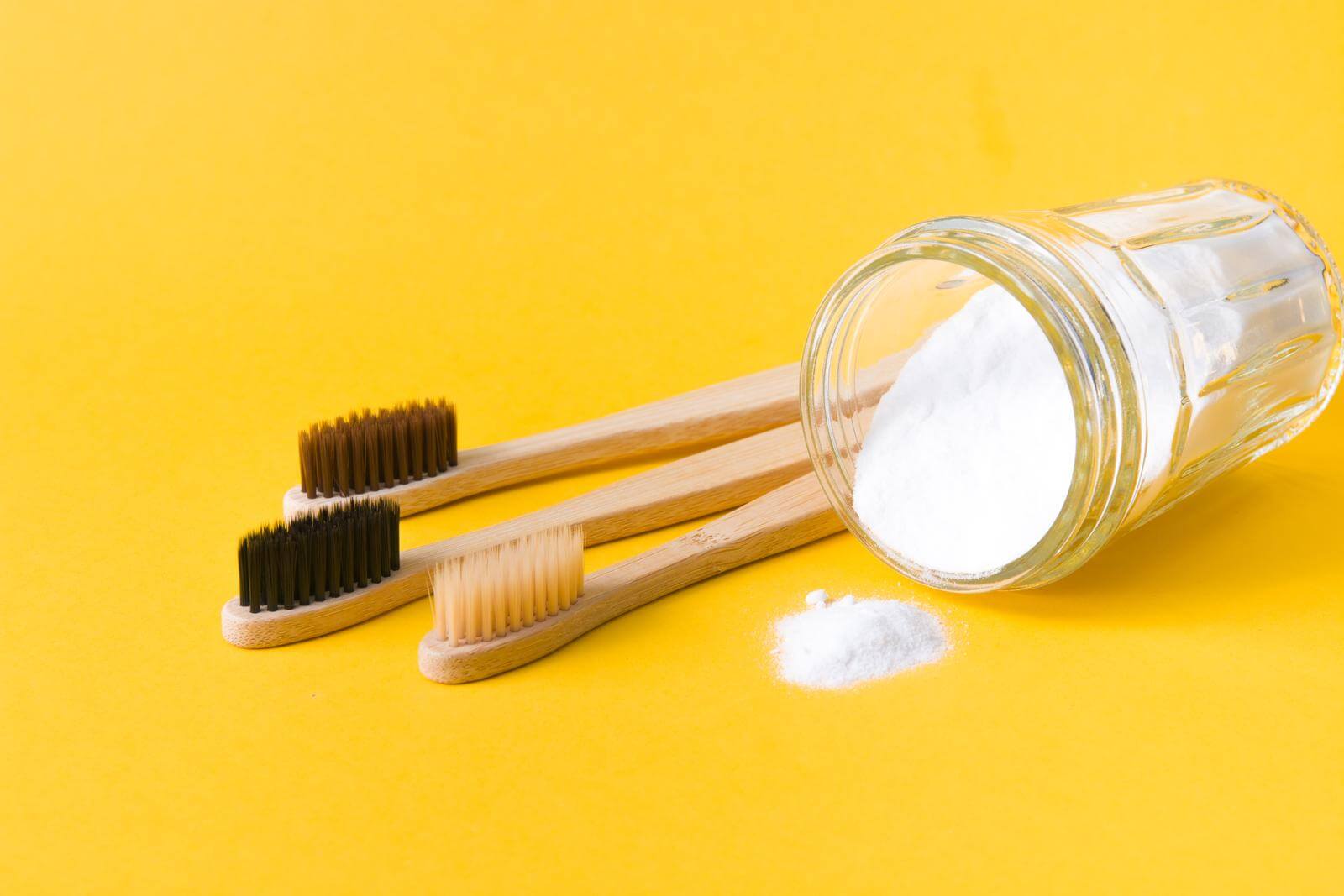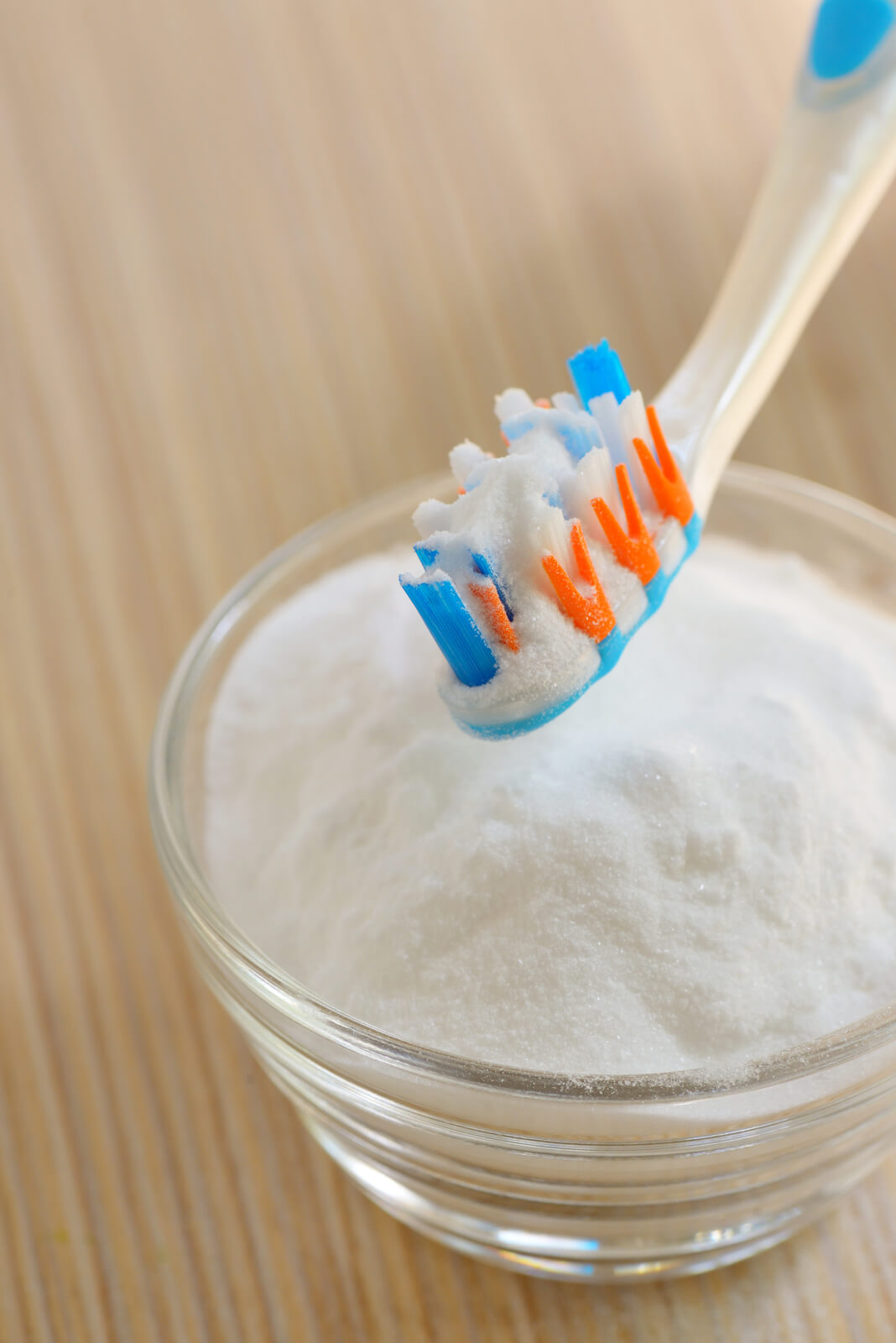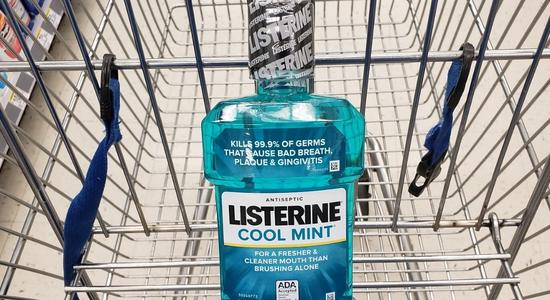See all "Mouth" Section Topics

Baking soda (sodium bicarbonate) is not the best alternative treatment for oral thrush. If you have looked around the internet, you may find a lot of advice suggesting that baking soda is a viable alternative treatment for oral thrush; and, the suggestion is to take a small amount and rinse your mouth with it.
This treatment may have some positive effect on oral hygiene, but not much effect on actually curing oral thrush.
It may be that a study relating the use of baking soda as a denture cleaning agent is purported as viable proof that a baking soda mouth rinse will work well against oral thrush. The main problem here is that the dentures are soaked in the baking soda solution.
Rinsing the mouth with baking soda only puts the substance in contact with Candida (Candida is the genus of yeast that causes oral thrush infections) for a short period of time.
Even studies that report the minimum inhibitory concentration (abbreviated MIC; this is the smallest amount of a substance that will stop the growth of an organism) of baking soda probably have a solution of this chemical in contact with the yeast for a certain period of time.
This can result in somewhat specious extrapolations; as the baking soda did produce a result, but it took a while to do it.
A study, published in AIDS Patient Care and STDs [22.8 (2008): 613-618], reported that a baking soda mouth rinse actually had no antifungal effect. In fact, it even caused there to be slightly more Candida in the mouth of those who used a baking soda mouth rinse. We will discuss this study more later on.
The key thing to remember, is that killing Candida with baking soda, does occur to some extent. Yet, you will need a certain concentration of baking soda in your mouth rinse and allow it to be in your mouth for a long period of time.
It would be plausible to use a 10% solution of baking soda for 5 minutes in the mouth to see good results.
Research seems to be conducted on 5% solutions of baking soda. Therefore, using double the concentration may reduce the time you need to keep the mouth rinse in the mouth to produce an efficacious result.
Thus, 5 minutes, quite a long time to keep a solution in your mouth, may be what is required for a baking soda mouth rinse to be effective.
As you can tell, normal use of baking soda mouthwashes, as research indicates, are not a viable treatment for oral thrush. Swishing a low concentration of baking soda in your mouth for a few seconds is not going to do much good. You may have witnessed this first hand.
If you would really like to use baking soda for oral thrush, consider increasing the concentration and time you rinse the solution in your mouth. You might end up with a very effective solution to this infection; although the method is atypical.
Fortunately, there are other natural remedies that probably work much better at curing oral thrush than baking soda does.
Candida Hub has an interesting article on a suggested natural mouthwash for treating oral thrush. This mouthwash may be far superior to baking soda, and it can be made at home. The link to this natural mouthwash article is listed directly below.
Furthermore, it is important to properly diagnose a case of oral thrush. If you do not have oral thrush, but some other mouth infection, antifungal natural remedies (and prescription drugs) may not work—as they are intended to be used against fungi.
If you would like some help seeing what oral thrush looks like, Candida Hub has a good assortment of oral thrush pictures you can view. These may help you more accurately diagnose a case of oral thrush. The link to this article with the pictures is presented directly below.
A 1/2 Day & Yeast is Gone!
Linda Allen suffered from yeast infections for years. Through researching natural medicine & Candida, she found an efficacious solution!
Linda is one expert you want on your side! Let her show you how to get rid of a superficial yeast infection in just 12 hours; AND, keep it gone!
A 60-day, 100% money back guarantee is provided.
Visit Official Site!Research on Baking Soda & Candida

A study published in Current Microbiology [69.3 (2014): 303-310] investigated the ability of baking soda to fight Candida. The study tested baking soda on 3 species of Candida: Candida albicans (C. ablicans), C. lusitaniae, and C. guilliermondii. Additionally, the study also tested acetic acid (the acid found in vinegar; most vinegar will have 5% acetic acid).
The study found the MIC for baking soda and acetic acid against the 3 Candida species. The MIC of baking soda was 5% for all three species. The MIC for acetic acid ranged from 0.25% to 0.3% for the 3 species of Candida.
The following chart from this study shows the MIC for baking soda and other chemicals.

The study also analyzed how long the MIC of baking soda would take for the MIC to kill yeast cells. The tests revealed, against all the species of Candida, that baking soda could not kill all the yeast; even after 48 hours of exposure.
Comparatively, acetic acid, at the MIC, killed all colony forming units (CFU) after 6 hours of contact with all three Candida species.
The study also analyzed how much percent of Candida species cells would die after 4 hours of exposure to baking soda. Acetic acid was also tested in this manner.
This test revealed that baking soda killed over 40% of the Candida species’ cells. Comparatively, acetic acid killed more than 75% of the species’ cells.
Baking soda killed over 40% of the Candida CFU; but could not kill the majority of the Candida CFU.
Baking Soda Mouth Rinse for Oral Thrush

As research appears to indicate, baking soda mouth rinses do not work well for oral thrush. Pay close attention to any claims to the contrary; they could merely be misinterpretations of research; e.g., saying soaking dentures in baking soda—and that worked to clean dentures (probably soaking for many minutes)—does not mean a simple, short mouth rinse (seconds of time in contact with baking soda instead of hours), is going to be an efficacious treatment.
One study, that looked exactly at baking soda mouthwash for oral thrush, was published in AIDS Patient Care and STDs [22.8 (2008): 613-618]. The purpose of the research was to assess the effect of mouth rinses on oral Candida prevalence and saliva flow in HIV positive patients.
This study had 108 HIV positive patients complete the research. None of these participants had AIDS or developed AIDS during treatment.
When the patients first visited the clinic, a 10 minute unstimulated saliva sample was taken for analysis. At following visits more 10 minute saliva samples were collected.
The study examined several mouthwashes. A baking soda mouthwash was also examined; it consisted of a 5% baking soda solution. The study participants used the mouthwashes for 12 weeks.
Patients using the baking soda mouthwash were given dry powder, a graduated bottle, and a measuring teaspoon and instructed to make a fresh 5% solution before use. Each patient was told to use 10 mL, of their specific mouthwash, twice a day.
The study found that the baking soda mouthwash actually increased the amount of Candida, but not significantly, in the saliva. The study reports that baking soda is a cleansing agent that dissolves mucus and loosens debris. It has also been reported that baking soda chewing gum reduces plaque formation.
The action of baking soda in the mouth might create an environment which discourages the attachment of Candida to the surfaces in the mouth. Yet, the study states that baking soda does not have an antifungal effect; but, it may influence how Candida causes infections. The following quote was taken from the study, reiterating these points:
Bicarbonate increased the count of Candida, but not significantly. It is a cleansing agent that dissolves mucus and loosens debris. Furthermore Kleber et al. reported that a sodium bicarbonate chewing gum reduces plaque formation. These effects may create an environment which discourages the attachment of Candida and may explain why Fischman et al. found no increase in Candida counts after 6 months use of a bicarbonate-containing detrifrice. Although bicarbonate does not have an antifungal effect, it may influence the pathogenicity of Candida.
AIDS Patient Care and STDs [22.8 (2008): 613-618]
Eliminate Bacterial Vaginosis & Vaginal Odor
Jennifer O’Brien is one prominent expert on BV that knows how to get rid of vaginal odor. BV is a common infection that you don’t have to put up with.
Jennifer will show you how to naturally eliminate vaginal odor in just 3 days.
A 60-day, 100% money back guarantee is provided.
Visit Official Site!A Real Denture Study with Baking Soda

Next, we will investigate a study that appears to be somewhat misused to suggest a quick mouth rinse with baking soda is effective in managing oral thrush. This study was published in Brazilian Oral Research [23.4 (2009): 381-385].
The purpose of the study was to analyze the effect of a 5% baking soda solution on the attachment of C. albicans to thermally activated acrylic resin plates. The study reports that complete dentures are basically made with thermally activated acrylic resin.
And, these dentures are a favorable environment for the development of Candida species of yeast—as they can strongly adhere to acrylic resin.
The study immersed the acrylic resin plates for 10 minutes in the 5% baking soda solution, and other cleaning solutions were tested as well.
The study found that the baking soda solution had a good anti-Candida adherence effect. Yet, it is a viable alternative—not as a mouthwash—but as a denture cleaning agent.
The study also reports that many studies have shown that a high concentration of baking soda has an antimicrobial effect, including on C. albicans.
Clair Goodall: Author & Nature Lover
Clair Goodall is a bee-obsessed natural medicine convert from Minnesota. She is one expert you might want to know more about!
Clair will help you protect you and your family from toxic products and chemicals and help you discover solutions from nature.
Also, Clair’s book is backed by a 60-day, 100% money back guarantee
Visit Official Site!More on Baking Soda for Candida
If you would like further information about baking soda for treating yeast infections (Candida causes a lot of yeast infections), which would be very relevant to oral thrush (as Candida causes oral thrush), Candida Hub has an entire article about this. The article is linked directly below.
A 12 Hour, Natural Oral Thrush Cure

Sometimes oral thrush can reoccur, and leave a person wondering how to get rid of it. This can be especially true when prescription drugs fail to work (more on Nystatin not working for thrush). This can be an arduous, annoying experience.
One woman who suffered from Candida infections was Linda Allen. Although Linda may never have had an oral infection of Candida, she did have a systemic Candida problem that caused repeat vaginal infections.
As you may know, when Candida invades a person’s body, it can cause a wide range of unusual symptoms. Fatigue, brain fog, unusual rashes, skin infections, and stomach problems are some of the things systemic Candida infections can bring about.
And, in the age of antibiotic drugs (which kill probiotic bacteria thereby presenting an opportunity for yeast to overgrow as they are not affected by drugs that kill bacteria), Candida related health issues are an important issue.
Linda Allen suffered from a blend of unusual symptoms and recurrent yeast infections, due to Candida overgrowth, for about 12 years. And, despite seeking the help of medical doctors, she was unable to find much help relieving her symptoms and frequent Candida infections.
Linda’s life changed for the better when she finally made an appointment to see a naturopath. The naturopath knew what the doctors did not know: Linda was suffering from a systemic Candida infection. This was the source of her unusual health problems and recurrent yeast infections.
After receiving the right diagnosis, Linda began to diligently research Candida and methods for treating it. She would end up spending considerable time at the library reading journals and combing through stacks of books. Allen ended up reading dozens of medical books from cover to cover.
In addition to doing personal research, Linda began to interview other Candida sufferers. She would also speak at length with herbalists, doctors, and naturopaths kind enough to give her their time.
While she was searching for a solution, Linda spent a significant amount of money on different products and treatments.
After years of research Linda did develop a natural solution she hoped would cure her Candida problem. When she finally put this treatment into practice she had amazing results. Her health returned and she found that her yeast infections stopped.
To be sure she was successful, Linda returned to a few physicians and requested that they run some tests on her. This would allow her to verify, with certainty, that her natural treatment worked.
And, the results of these tests showed that all indicators of infection had disappeared. Linda was healthy again, after such a long time of struggle.
Linda has since gone on to write a book detailing her natural treatment for Candida. Her book also provides a 12 hour cure for superficial yeast infections (and, oral thrush is a superficial yeast infection of the mouth). Using this natural method, you can get rid of a case of oral thrush in about 12 hours of time.
In addition to the 12 hour treatment plan, Linda also discusses how to cure systemic Candida problems—like the one she had. For those struggling with Candida related health issues, this book can provide key insights that will allow them to get free from systemic Candida problems.
Linda’s publisher, a subsidiary of the United States based firm Keynetics Incorporated, provides a generous 60 day, 100% money back guarantee on Linda’s book.
This allows anyone interested in trying Linda’s treatment plan the assurance that they can quickly get a full refund of their money if they are not satisfied.
Linda’s publisher, a prominent digital retailer, provides Linda’s book as a downloadable ebook. It can be accessed right way; you will not need to wait for a book to come in the mail.
Additionally, Linda’s publisher provides great customer service, and they make the refund process quick an easy for dissatisfied customers.
If you would like to find out more about Linda’s personal journey to better health, see reviews of others who used her treatment plan, or would like to get more information about her book; you can learn more at Linda Allen’s website.
Author: Mr. Nicholas Gross

Nick Gross is a natural medicine enthusiast who has been researching and writing about natural medicine since 2008. Nick is primarily a web developer but also researches and authors written and video content about natural health. Nick has a bachelor’s degree in Management Information Systems from the University of Northern Iowa.
Disclaimer
The information on this website is not a prescription for anyone. This information is for informational or educational purposes only, and is not a substitute for professional medical advice or consultations with healthcare professionals.
Affiliate Disclosure
Some of the links provided on this website are affiliate links. When a purchase is made through these links, Candida Hub earns money from commission. This helps to keep the website up and helpful to people for free. Thank you for any support!
Stay Up to Date
If you enjoyed this article, consider following / liking our Facebook page. This page is primarily utilized to alert followers of new articles that are put on Candida Hub. Candida related news is also discussed. While you are there, you can see what has been more recently added to Candida Hub.
SOURCES:
- https://doi.org/10.1007/s00284-014-0585-9 — Lastauskien?, Egl?, et al. "Formic acid and acetic acid induce a programmed cell death in pathogenic Candida species." Current Microbiology [69.3 (2014): 303-310].
- https://doi.org/10.1089/apc.2007.0160 — Patel, Mrudula, et al. "Antifungal effect of mouth rinses on oral Candida counts and salivary flow in treatment-naïve HIV-infected patients." AIDS Patient Care and STDs [22.8 (2008): 613-618].
- https://doi.org/10.1590/S1806-83242009000400006 — Sousa, Fernando Augusto Cervantes Garcia de, et al. "Effect of sodium bicarbonate on Candida albicans adherence to thermally activated acrylic resin." Brazilian Oral Research [23.4 (2009): 381-385].







